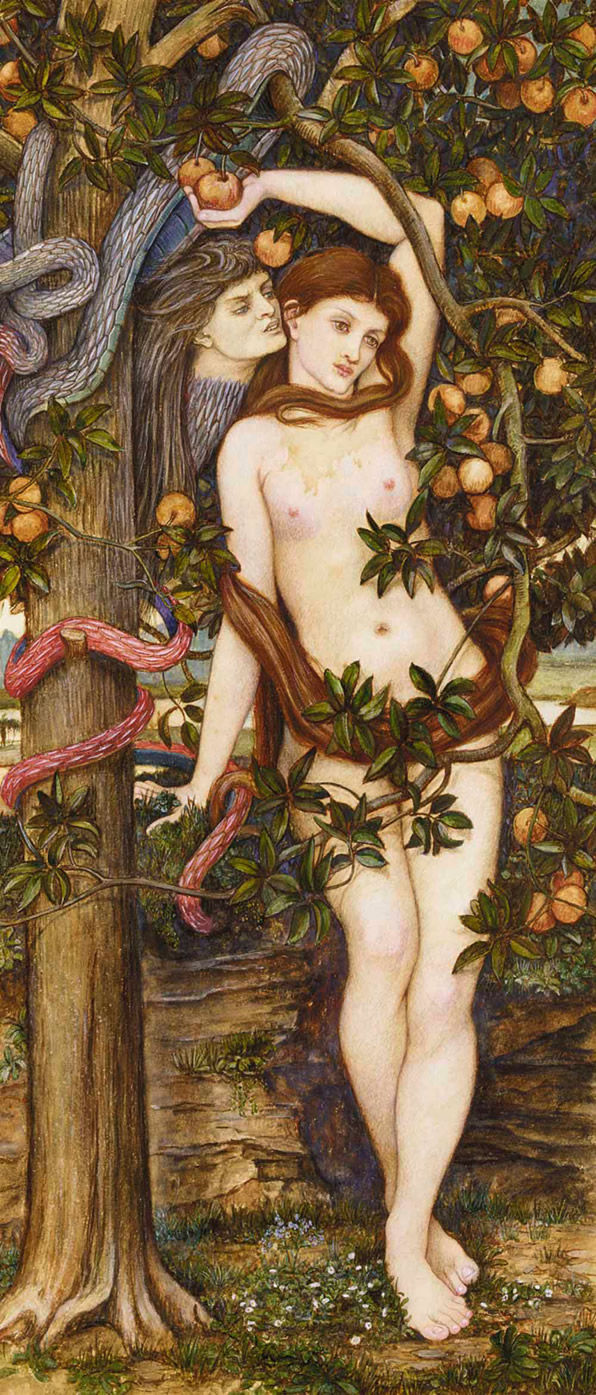This month we will analyze the analogies that have been established between snakes and women in the History of Art through various examples. Why several and not one? Very simple: because the assimilation of both concepts (woman and snake) established itself as an easily identifiable iconographic type that appears in numerous supports: not only painting, but also sculpture and, in many cases, also in sculptural decoration in architecture (especially , porticoes of medieval churches). In this way, having seen an example, we could say that, more or less and saving the nuances, we have already seen them all, although in this case we will focus on the pictorial representations.

Thus, we find in the Book of Genesis one of the bases of Judeo-Christian misogyny. It is curious that "Jesus Christ died on the cross to free humanity from sin", and that this fact only freed men from it: women continue to be judged, we continue dragging the sin of Eve and we continue, from the Christian optics, being responsible for having bitten the apple. In this way, the Judeo-Christian sacred writings (the Old Testament, shared by both religions) promote a negative reading of female curiosity and, at the same time, make female rebellion invisible, by not including the figure of Lilith in the reading of the Book of Genesis.
Lilith was Adam's first woman and, unlike Eve, she was not created from man's rib, but completely autonomously. Despite the fact that we will not talk about Lilith in this article, I do consider it necessary to make this note since, in many cases (as in the work Stanhope) the fact that the serpent appears with the head of a woman is not simply a misogynistic wink: it is also a reference to the figure of Lilith, linked to Eve, and both exemplified not only as the downfall of Adam, but also as the downfall of humanity. Misogyny squared, wow. In addition, beyond the multiple symbolisms associated with the figure of the snake (different depending on the culture in which this animal is registered) it should be noted that, from Christian iconography, the snake has a markedly negative component: when crawling on the ground and surfaces, is linked to the earthly. This opposes her to the celestial (and, therefore, to the divine) so that the association of a woman with a snake body contains a double negativity in itself.
Here are two other works that represent the Temptation scene in a similar way and that belong to different chronologies:

Table from "The Fall of Man" in the Vienna Diptych, by Hugo van der Goes (1467-1468) | Temptation of Adam and Eve by Raphael Sanzio (1508)
The biggest difference between the first example (Stanhope) and the next two (Van der Goes and Raphael) is the number of characters that appear in the scene. In the first case, the protagonist is Eva and the serpent; in the next two, Adam is included. If we look closely, his figure moves slightly away from the main action, either staying out of what is happening (Van der Goes) or interacting with Eva in an attempt to keep her away from temptation (Raphael). In either of the two types of representation of the same scene, the responsibility for sin, at a symbolic level, always falls on Eve: it is she who is seduced by the serpent, it is she who ignores Adam's distractions.
This is important, since in the 19th century an entire misogynist-based ideological and artistic apparatus will be developed that will try to blame (again) women for the ills of men, just as the Book of Genesis had done with Eve. For this reason, the representation of Stanhope is inserted in a context in which the feminist movements in favor of women's suffrage had already emerged, and the creation of the "New Woman" was sowing panic in the male population, whose privileges were being directly challenged.
Knowing this, perhaps it no longer surprises us that in the 19th century an iconographic type already included in the Middle Ages and the Renaissance was recovered: the woman as a sinner and the woman as a temptress. Misogyny continually reinvents itself, using not only the ideological apparatus to reproduce itself, but also the artistic apparatus. For this reason, I never tire of emphasizing that art not only has aesthetic value: through it we can approach the representation of women and conquer, from the field of the symbolic, the mechanisms and tools that, throughout the ages, centuries, they have served to represent us either as whores, or as saints, in an eternal dichotomy that, in many cases, we have assimilated as our own and inherent, when in reality it is constructed and apprehended.
Art, after all, was not only at the service of power: it was also at the service of ideology. For this reason, if we want to know what the situation of women was in the past, we can turn to literature and written material culture, but also to plastic material culture.
Comments